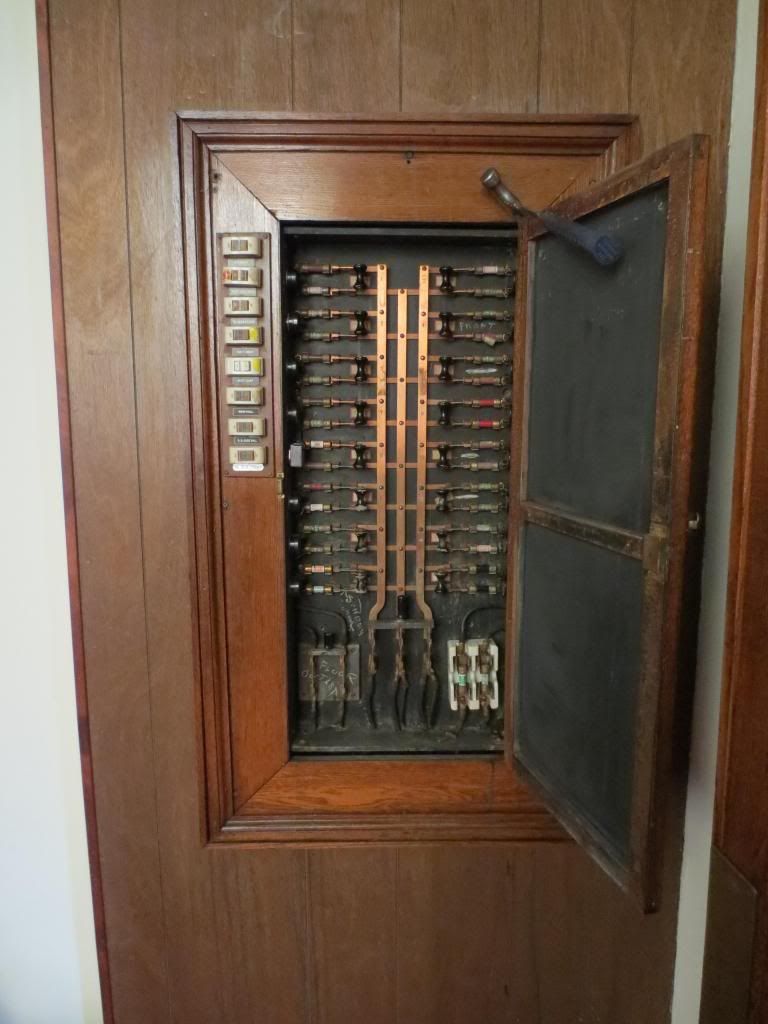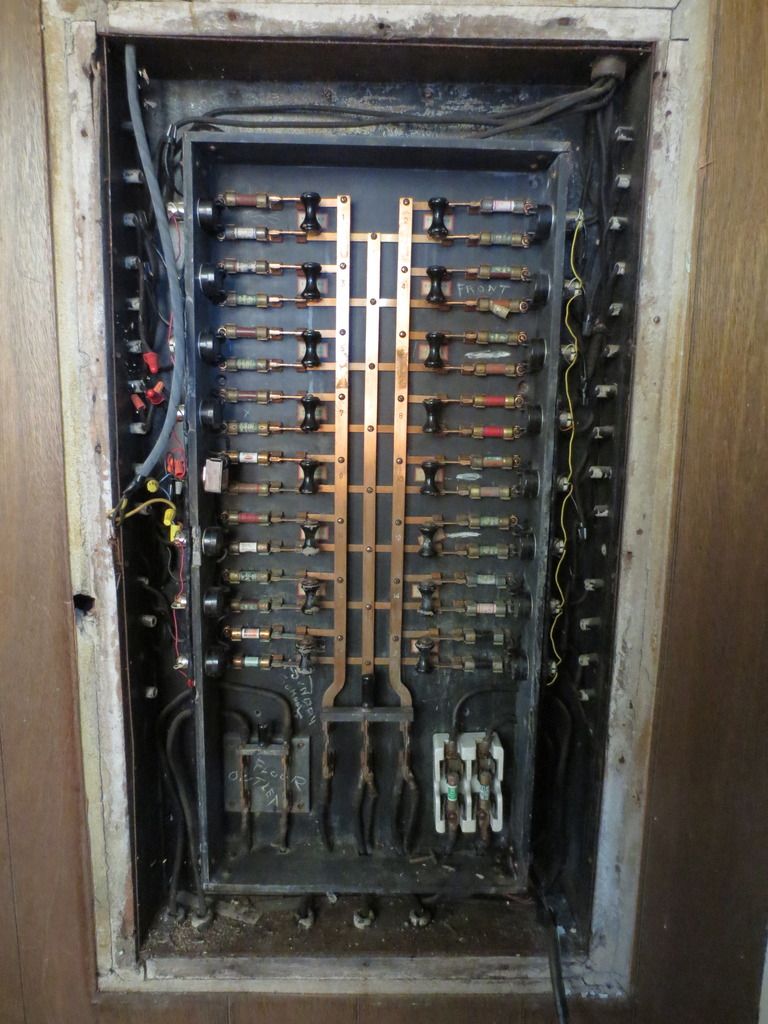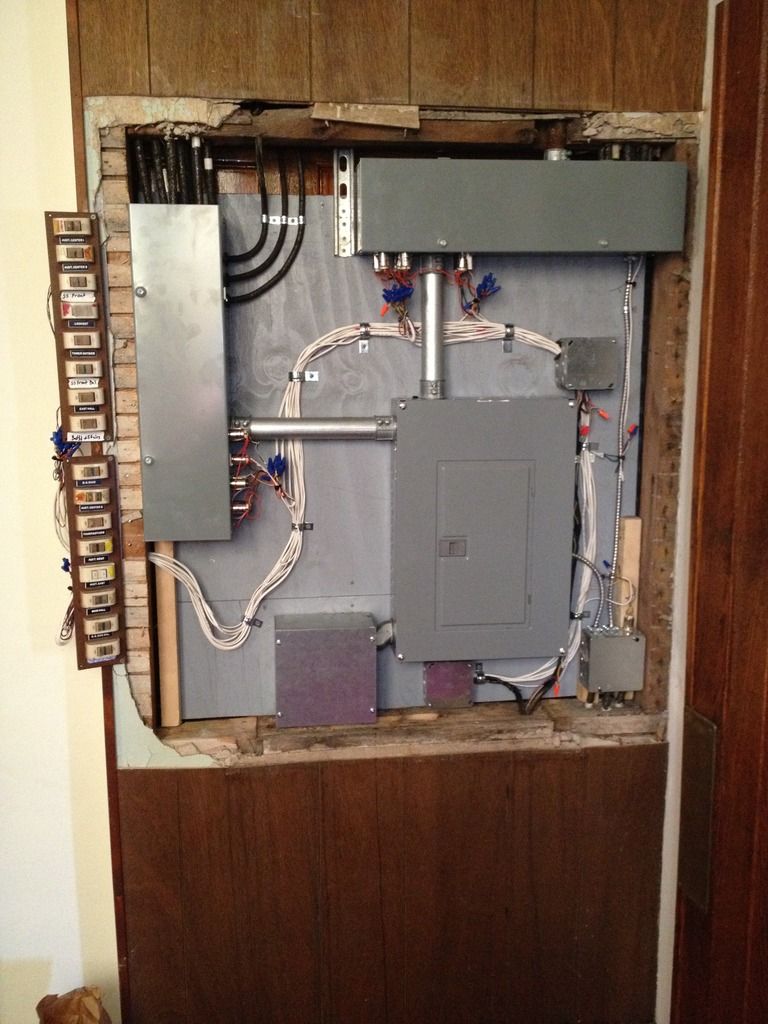Wired in 1914, OC protection box in grandma's house had no cover, asbestos cloth lined 14.5" by 18" OPEN recess in the outside wall on the basement stairs.
Now, the individual fuse blocks (both of them) had white ceramic covers over the linen cored lead/tin fuse wire (looks like solder)
I have one of the fuse blocks yet in my stash of old stuff, pic and other info in an old thread (link below) with info about the fuse element I did not know till Jreaf posted a pic of the fuse wire also. When a pre-teen kid, I 'upgraded' grandma's fuse box with knife switches having E26 base fuses.
Picture of old fuse block and contributions of others adding to knowledge base. There are a couple of other neat old photos others posted also, esp the Woolworth card with fuse wire on it!
http://forums.mikeholt.com/showthread.php?t=174517 http://forums.mikeholt.com/showthread.php?t=174517&highlight=fuse+ceramic
Only part of grandma's house was K&T, all the lights had linen covered wire pulled thru the old gas piping. Always did wonder how grandpa pulled that tar/cloth covered wire around the short 90 deg gas pipe elbows! Was told once that they disassembled the gas pipe, pulled the wire by sections, and screwed it back together!
Grandma lived next door, my bedroom was there - had to 'upgrade' her house for my 'experiments'. IIRC, the original wiring had one outlet in the living room for the radio, another in the dining room where grandma had her ironing board. Every other outlet in the house used adapters with Edison bases screwed into light fixtures.
We wuz poor - some of the wiring added was old extension cords found in the alley and taped up with friction tape. We all survived, never any electrical failures.




